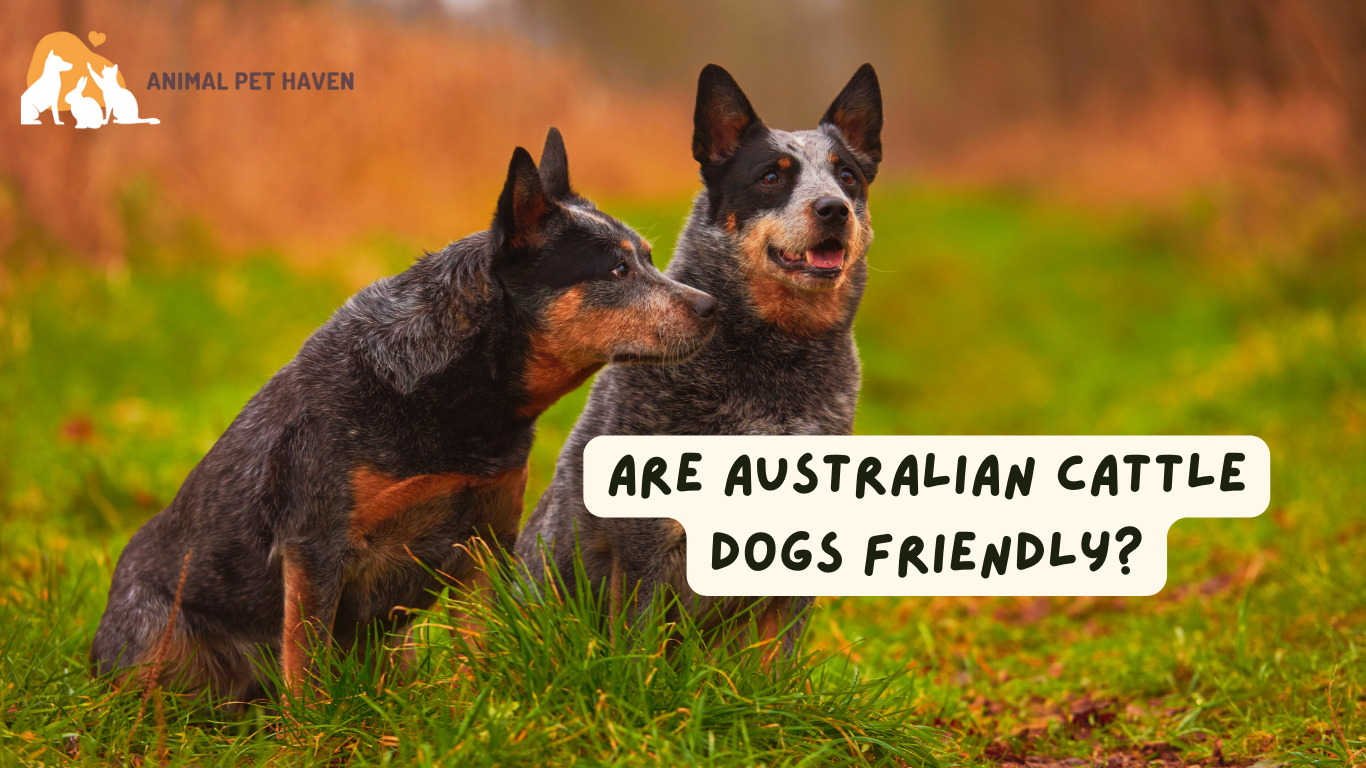Australian Cattle Dog History
The Australian Cattle Dog was developed by nineteenth-century Australian settlers to herd cattle on big ranches. This breed contributed significantly to the expansion of the Australian beef industry by quietly but aggressively herding the sometimes unmanageable, almost feral cattle with nips and bites.
Today’s Australian Cattle Dog is the outcome of numerous breedings and cross-breedings. Ranchers looked for a sturdy canine that could withstand Australia’s severe environment and working circumstances. Dogs brought from England were not up to the task, so they were bred with the native Dingos.
Blue-colored canines proved to be the most popular among ranch owners and drovers, earning them the nickname Blue Heelers. They were especially popular on cattle runs in Queensland, where they were known as Queensland Heelers or Queensland Blue Heelers.
Kaleski created a standard, basing the Cattle Dog on the Dingo, claiming that this was the type best suited to the Australian desert. (Except for color, today’s Australian Cattle Dog resembles the Dingo.
The breed was formerly known as the Australian Heeler but was later renamed the Australian Cattle Dog, which is now considered official across Australia and worldwide. However, some people still refer to them as Blue Heelers or Queensland Heelers.
Following a spell in the Miscellaneous Class, the Australian Cattle Dog was accepted for registration by the American Kennel Club in May 1980. He became eligible for display in the Working Group in September 1980. The breed was transferred to the Herding Group in January 1983.
Australian Cattle Dog Size
Males stand 18 to 20 inches tall, while females stand 17 to 19 inches. Weight fluctuates between 30 and 50 pounds.
The Australian Cattle canine is a very energetic canine that requires continual mental and physical stimulation. When he’s bored or lonely, he can become destructive. He’s prone to chewing and tearing up things he shouldn’t. If you decide to live with an Australian Cattle Dog, be prepared to keep him busy—and tired. If he is fatigued, he is less likely to get into trouble.
The Australian Cattle Dog is possessive of his territory and will defend it. He is also reserved (although not necessarily unpleasant) around strangers. But he is devoted to his owner and family. Once he bonds, he prefers to accompany his master wherever he goes; in fact, punishment for the Australian Cattle Dog is physical separation from those he loves.
Australian Cattle Dog Personality
He is intelligent, yet he can also be stubborn and willful. Consistent, positive teaching helps him control his independence. Genes, training, and socialization are a few factors that affect temperament.
The Australian Cattle Dog, like all dogs, requires early socialization—exposure to a variety of people, sights, sounds, and experiences—when they are young. Socialization ensures that your Australian Cattle canine puppy grows into a well-rounded canine. Enrolling him in a puppy kindergarten class is an excellent start. Invite visitors over regularly, and take him to crowded parks, dog-friendly stores, and strolls to meet neighbors. Which will all help him improve his social skills.
Some might argue that having a dog in the family is both an honor and a luxury. If you love dogs, you will surely agree with this remark. A canine companion holds a special place in the human heart. And if you have a family, your furry pet is undoubtedly an important member of it. But, if you’re thinking of adopting a new dog, what breed makes the finest family pet?
Of course, understanding which breeds are suitable for children is a great place to start.
Australian Cattle Dogs: Family Dogs and Intelligent Companions
Australian Cattle Dogs, often known as Blue Heelers, are alert, friendly puppies with great intelligence and a strong sense of devotion. These loyal companions are not aggressive and might be a wonderful choice for households with children.
However, if you have very young children, you should look for a young puppy who can grow up alongside them and be properly trained and socialized with them. Otherwise, this breed may be a better option for older youngsters, perhaps 9 or 10 years old. This information is useful when deciding whether to buy or adopt an older or younger dog. ACDs can be a little nippy, which can be scary for younger children; this is why early training is so important.
Although you should always reserve final judgment until you meet your potential new housemate, an Australian Cattle Dog makes an excellent choice for a new family pet.
Here are four reasons why an Australian Cattle Dog is the ideal family dog:
- An Australian Cattle Dog is very active and has a high energy level, making him ideal for keeping up with busy children.
- An Australian cattle dog is extremely devoted. And if he grows up with your children, he will undoubtedly look after them and keep them safe.
- An Australian Cattle Dog is not known for barking excessively. This is always a bonus if you have young children who are sensitive to loud noises.
- An Australian Cattle Dog is incredibly bright. So if you put in the time and effort, he will rapidly learn how to behave.
Getting to Know The Australian Cattle Dog
Of course, your dog’s personality plays an important role in determining whether he’s the ideal fit for you and your family, but there are other factors to consider. It’s also critical to learn the fundamentals of any dog breed you consider bringing into your home. Size, training requirements, health difficulties. And other considerations can all have a significant impact on how well your pet adapts to your household.
For example, a boxer is an excellent choice for a family with children. But if you do not have the time to offer him adequate opportunities for much-needed exercise, things will not go well. As a result, while considering purchasing a new dog, regardless of breed, it is important to consider the big picture.
Knowing the basics about your prospective puppy will save you a lot of uncertainty and trouble down the road. (For example, discovering that the lovely little puppy you recently brought home to your modest apartment would ultimately grow into a 100-pound giant.).
Here are some useful facts about the smart and alert Australian Cattle Dog:
SIZE
An Australian Cattle Dog has an average height of 17 to 20 inches and a weight of 35 to 50 pounds. Males in most dog breeds are slightly larger than females.
Life Expectancy
This breed has an average lifespan of 12 to 16 years, however, some have survived for 20 years. In truth, the official world’s oldest dog is Bluey, an Australian Cattle Dog who died at the age of 29 years and 5 months.
GROOMING NEEDS:
The Australian Cattle Dog’s coat is smooth and double-layered, requiring only a fast weekly brushing and occasional wash. However, this puppy sheds his undercoat twice a year during the shedding season. As a result, during shedding season.
You’ll need to brush him every few days to remove the dead hair that has accumulated in his coat. Of course, like with any breed, frequent nail trims and adequate dental care are essential. Also, examine your Australian Cattle Dog’s ears regularly to prevent wax buildup.
HEALTH ISSUES
A skilled breeder would examine her dogs for a variety of health issues, including deafness, progressive retinal atrophy, and hip dysplasia. The National Breed Club advises many assessments, including hip, eye, elbow, and other testing. For additional information, please see the Official Breed Club Health Statement.
EXERCISE NEEDS
ACDs require much more than a quick walk around the block. As a result, while putting on a leash and going for a run is a fantastic start, this high-energy dog requires many more opportunities for training and play. Australian Cattle Dogs were bred to work and herd cattle; therefore, this pup thrives in a job setting. Of course, unless you live on a farm, you’ll need to find other ways to keep your canine partner happy. Taking your dog on lengthy, daily runs is beneficial, as is enrolling him in canine activities such as obedience and agility training.
TRAINING
Early socialization and basic obedience training are essential for the Australian Cattle Dog, especially given his great sense of intelligence. Once you’ve learned basic obedience with your dog, regular and consistent training and activities, such as agility or herding, are recommended to keep him active and motivated. If you have to leave the house for a while, make sure your dog has had enough exercise and has something to do. Such as chewing on a Rolly Cannoli or another form of interactive toy. If you leave your dog alone with nothing to do, he will get into trouble.
Dogs and Kids
Regardless of the sort of dog you choose, proper education for both your children and your new pet is essential. Make sure your children understand how to handle and treat animals and introduce your puppy to them as early as possible.
If your children are able, incorporating them into the training process will help them form a bond with your new family pet.
Read More…
Is a Siberian Husky a Good House Dog?













